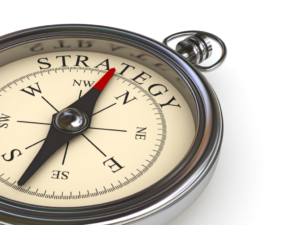We are nearly at the end of 2022, and so far, the economic conditions around the globe have declined, especially if you are in big tech; from the privatization of Twitter to FTX and the stock slump of Meta and Amazon, almost every big tech giant has taken a hit this year. Most companies have felt the market downturn and are looking for ways to stand out from the crowd.
When things like this happen, companies will always look at their sales teams, and at times like these, sales managers must have strong sales strategies to fight the unexpected.
Strong sales strategies are the backbone of any sales team, leading companies to generate revenue and grow over time. If the sales teams fail to establish a strong sales strategy or fail in its implementation, the company’s future will feel the effect.
Sales Strategies
When we talk about sales strategy, sales managers need to consider their targeted audience, market trends, social media, proper management of distribution channels, after-sales service, customer support, and finally, sales recovery.
There is no silver bullet in sales, and sales strategies are always evolving. Nothing is sure in sales; what works today may not work tomorrow. Nonetheless, even in these fast-changing circumstances, some things stay consistent, and in general, keeping these things in line and planning sales strategies accordingly will keep the company on track.
Targeting Audience
Sales teams recognize the significance of their target audience’s preferences and act accordingly. However, over time, the target audience’s mood and buying patterns change, and sales teams must be aware of such shifts and adapt their strategies appropriately.
Understanding customer preferences helps create sales patterns and helps in targeted marketing; if you are selling a children’s product, then knowing that women in the age bracket of 22 – 40 years old will be the most attractive customers.

Market Trends
To be an effective strategy, keeping an eye on market trends is very important; what is going on and how the market is performing, what’s new, and what’s trending all need to be accounted for in the sales strategy.
Sales managers need to keep an eye on market trends when formulating a sales strategy. It’s not always the case that customers are making buying decisions on their own; sometimes, businesses have to plan and implement innovative ways to encourage customers to buy their products by establishing new market trends.
People will often purchase a product just because it is trendy or because they like how their favorite celebrities, athletes, or musicians utilize the product, even if they have no practical need for it themselves. That is why many marketing and advertising agencies use their services as a tactic to boost sales. Nowadays, marketing agencies also utilize social media influencers, especially on TikTok and Instagram.
Social Media
In the past decade, social media platforms have proven to be game changers in sales and marketing. If one successfully gains people’s trust and gathers enough followers, these platforms are enough to generate an immense level of sales for the organization.
But still, it is easier said than done – a lot of time and effort is required to create a strong followership and community on these social platforms, and even after that, one must play his cards right to get the conversion started with these followers.

Sales Automations
Sales teams often neglect sales automation; many personnel follow the old-school sales methods and feel burdened when asked to use software and learn sales automation.
Sales automation helps increase creativity and allows sales teams to delegate routine dedicated laborious tasks to software.
AtmosAI Team Management, AtmosAI Commissions, and AtmosAI Sales Portal help the company manage salespeople and their products, lead customers through the checkout process, generate applicable commissions and create critical metrics for your business, such as customer preferences and buying patterns or agent performance.
Distribution Department
Distribution always plays a significant role in any sales strategy; if the management fails to create proper distribution channels, it becomes challenging for any organization to generate enough sales and ultimately faces a decline in revenues.
The goal of every business is to get its products into the hands of as many people as possible, which is achieved via distribution strategies. When you make it simple and fast for consumers to acquire your products and services, you increase the likelihood that they will do business with you again.
When deciding on a distribution plan, companies look at the big picture to see what would maximize profits with the least expense. You may employ multiple distribution strategies or overlap to achieve your business goals and objectives. A product may make better online sales (AtmosAI CMS) with one demographic and email blast with another (AtmosAI Marketing).

After Sales Service
After-sales services are a significant part of sales and sales strategy. Still, many organizations often fail to understand its importance and underestimate the value that can be bought with a little focus on after-sales service.
After-sales services are required when you sell a product or service that has a long life and needs a little tweak to increase its life cycle.
After-sales service helps management increase customer trust and creates brand loyalty and repeat sales by providing excellent service even after sales. Some organizations charge a small amount for after-sales services but rest assured, if done right, customers willingly pay for it if they get the best value.
Customer Support
Customer care and support speak to customers on an as-needed basis to assist the customer with a question or issue. Such interactions are made through mediums like calls, emails, and social media messaging and are crucial to the smooth operation of any business.
If a customer service team gives customers exceptional customer support and helps them with their questions or problems, they will likely be satisfied and return for future purchases. This will ultimately lead to increased sales and might result from satisfied consumers sharing their positive experiences with the company online or via word of mouth.

Sales Recovery Department
What many sales managers forget to include in their sales strategy is to account for the recovery period; we often make sales on credit and define a period in which the amount due needs to be recovered from the creditors. But, they often don’t pay on time, and the chances of debt occur as more time passes.
To tackle this, many companies appoint recovery officers and sometimes create recovery departments that work closely with the sales and finance departments.
Some may wonder why a business would risk debt by offering credit sales, which would require setting up an additional department at a higher expense. Since this varies widely by industry, the explanation is that many businesses choose to operate on credit rather than cash to allow shops more time to sell goods to consumers and create receivables.
However, there are ways companies often use to recover credit amounts due and avoid bad debts. They are:
- EPDs (Early Payment Discounts)
- SD’s (Special Discounts)
- BPD (Bulk Purchase Discounts)
Conclusion
Thousands of different strategies can be applied to make bulk sales in 2023, but the basics and core of all these are the same. Some of you may already be familiar with these strategies, and some would like to add more and get creative.
Still, the reality is that it will always depend upon the owners, directors, and managers of the organization to read the market and follow the industry norms and stay on their toes, always looking for better ways to develop themselves and their sales teams to tackle any difficulties and problems that they might face during the year.
AtmosAI hopes that the New Year will bring prosperity, jobs, and growth all around the globe.




